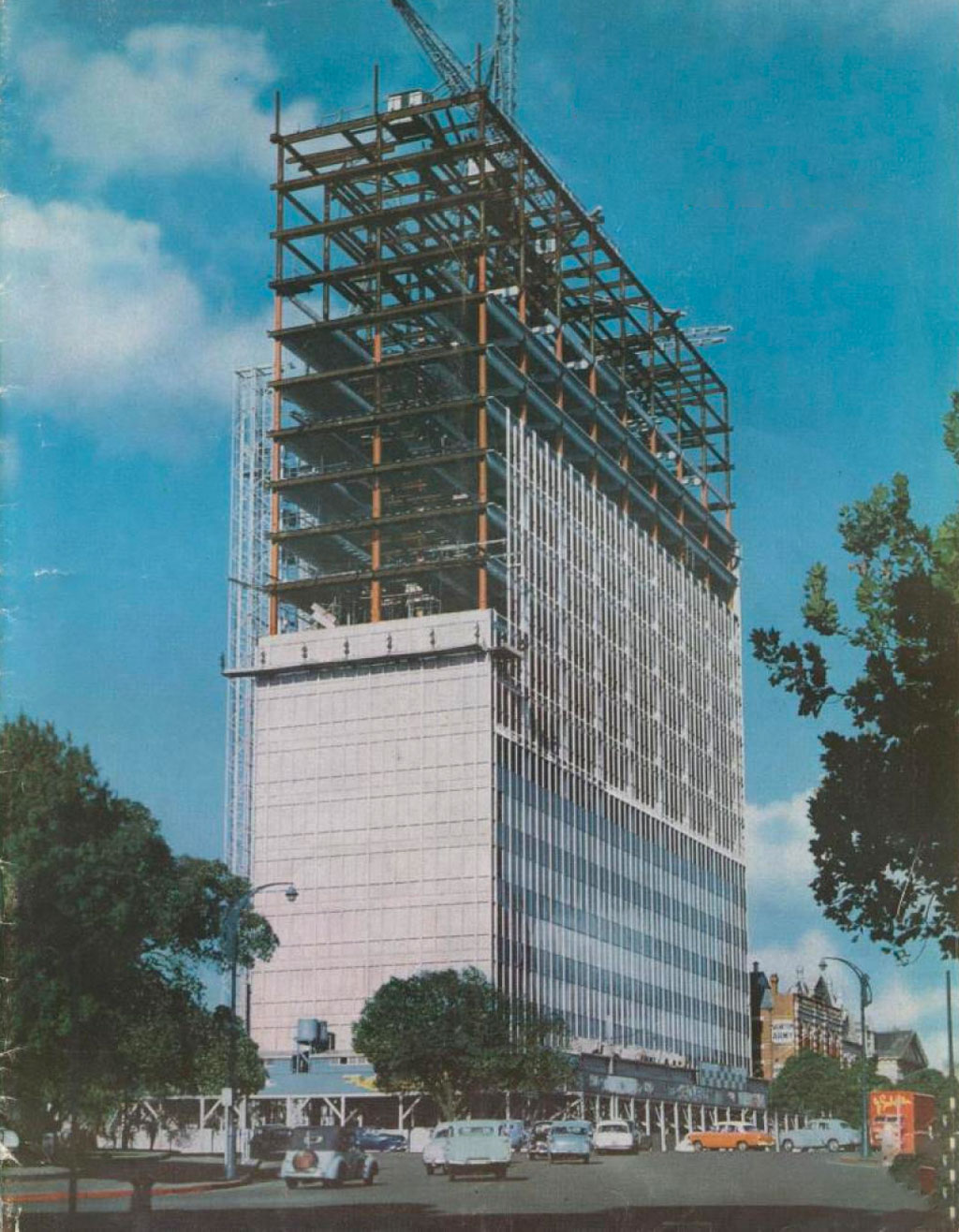Australia’s oldest skyscraper, Melbourne’s Orica House, has maintained its enviable long-term 100-per-cent occupancy rate despite the turmoil in the office sector.
This compares to the Melbourne CBD at 89.6 per cent as the city contends with lockdowns and waits for vaccination rates to rise so workers can return to the office.
One Nicholson Street in East Melbourne, formerly known as ICI House, has had extremely high occupancy rates since it was built in 1958.
It was designed by Osborn McCutcheon of Bates Smart and McCutcheon—today Bates Smart has offices in the building and describe it as having a Mad Men feel, in reference to the popular TV series set in the advertising world of New York in the 1950s to 1970s.
Although it is Australia’s oldest skyscraper, many modern elements were used in its design, including creating public gardens on the site.
It also had a cafeteria on the top level which was recently converted to a coffee and co-working space.

Extensive renovations have kept the 19-storey tower up to standard while retaining its original features, including the offset elevator core.
The building, owned by Charter Hall, has 16,965sq m of net leasable area, 18 floors of office and ground floor retail.
Bates Smart director Jeffery Copolov said that at the time it was built, the idea of the building was fairly alien and possibly even threatening to a lot of people—but not his family.
“I’ve always had a great affinity for the building for as long as I can remember,” Copolov said.
“My grandfather was a modernist and I know from family tales he would bring the family on excursions on a weekend to see this incredible tower going up.
“First and foremost it had to work brilliantly as one beautiful, unencumbered floorplate.
“It meant that every single person within the building was no further than 8.5m from daylight—you could have a totally open floor environment or have a series of offices along the perimeter.”

Charter Hall acquired the building in 2010 when the Macquarie
Funds Platform was transferred to the group.
Charter Hall portfolio manager Nicole Ward said it has had 100 per cent occupancy for most of its history, including throughout the pandemic.
“The eastern precinct is a government precinct at the top of the city that typically has a lower vacancy rate,” Ward said.
“So if space comes up we tend to see the government absorb it, along with large industry superannuation groups.
“We’ve been in and out of lockdowns for 18 months now and every time we come out of lockdown there’s just such a want for people to get back to normality.
“The pent-up demand is there, there’s still briefs coming through, tenants still want to inspect they just can't at the moment.
“Melbourne went from having the lowest vacancy rate about 18 months ago to having the highest vacancy rate we’ve ever had.”
The office portfolio manager said the group had been quite resilient with long term leases and were working through pre leasing new assets.
















